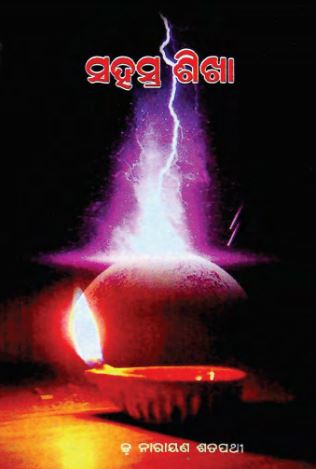Sahasra Sikha, an eminent work penned by Narayan Satapathy, occupies a significant niche in the realm of Odia drama, particularly within the historical sub-drama category. First published in 1966 and later presented in its 2nd edition in 2012, the book encapsulates a journey through time—a narrative that not only entertains but also educates its audience on the cultural and historical ethos of Odisha. This drama stands as a testament to Satapathy’s literary prowess, striking a delicate balance between artistic expression and historical narration.
At its core, Sahasra Sikha is a dramatized portrayal of historical events and traditions that have shaped the region’s sociocultural landscape. Satapathy weaves a narrative that navigates the complexities of history while encapsulating the richly layered traditions endemic to Odia society. His meticulous research is evident throughout the text, lending authenticity to the characters, dialogues, and situations. This lends the drama a dual identity as both a work of art and a document of historical significance, inviting readers to immerse themselves in a bygone era where valor, sacrifice, and social transformation were the driving forces behind monumental change.
The structure of Sahasra Sikha is notable for its innovative approach to sub-drama—a blend of classical dramatic elements with interpretative modern insights. Rather than adhering strictly to conventional historical recounting, Satapathy introduces sub-plots and nuanced character arcs that add depth to the narrative. Every scene in the play is carefully designed, with interludes that serve as reflective pauses, allowing the audience to ponder over the historical contexts being depicted. These artistic choices underscore Satapathy’s commitment to ensuring that the drama is not merely a retelling of events, but a layered narrative that explores underlying themes of power, identity, and resilience.
Language in Sahasra Sikha mirrors the rhythmic and lyrical quality that Odia literature is celebrated for. Through expressive dialogues and poetic monologues, the drama bridges the gap between theatrical performance and historical discourse. The text is rich with metaphors, allegories, and symbolism, effectively capturing the essence of an epoch that is both noble and tumultuous. Satapathy’s command over language elevates the drama from a simple historical recounting to an immersive experience, where the audience can feel the pulse of history and appreciate the subtleties of cultural evolution.
Moreover, the historical subtext of the drama invites a critical reflection on the roles of tradition and modernity. It challenges preconceived notions by juxtaposing the regimented societal structures of the past with the evolving dynamics of contemporary Odisha. This duality propels the narrative forward, ensuring that the drama remains relevant across different eras. The nuances of historical events are not just presented as facts but are interwoven with human emotions, personal ambitions, and collective struggles, making the narrative both relatable and thought-provoking.
In conclusion, Sahasra Sikha by Narayan Satapathy is much more than a drama; it is a bridge connecting the historical legacy of Odisha with the present day. Through its masterful blend of sub-drama and historical narratives, the work invites audiences to appreciate the enduring spirit of the region’s past while reflecting on its implications for the future. Both the original publication in 1966 and the refined 2nd edition in 2012 stand as milestones in Odia drama, offering a rich, compelling, and timeless experience for readers and theater enthusiasts alike.
Books Info
| Books name | Sahasra Sikha |
| Author | Narayan Satapathy |
| No Of pages | 68 |
| Publisher | Satya Prakasha |
| Publication | 1966, 2012 2e. |
| Printed At | Sri Maa Printers |
| Distributor | Friend’s Publishers |

